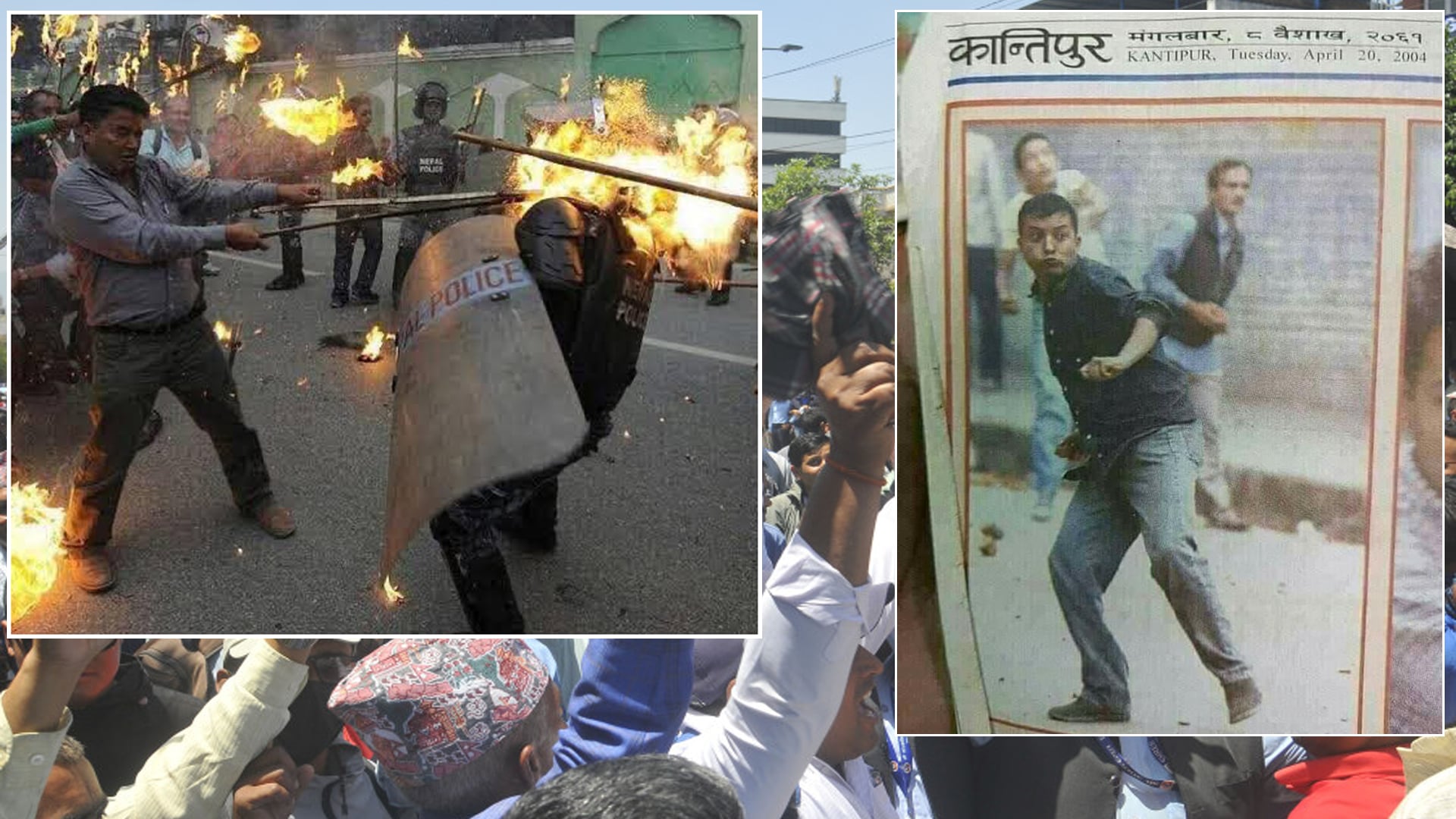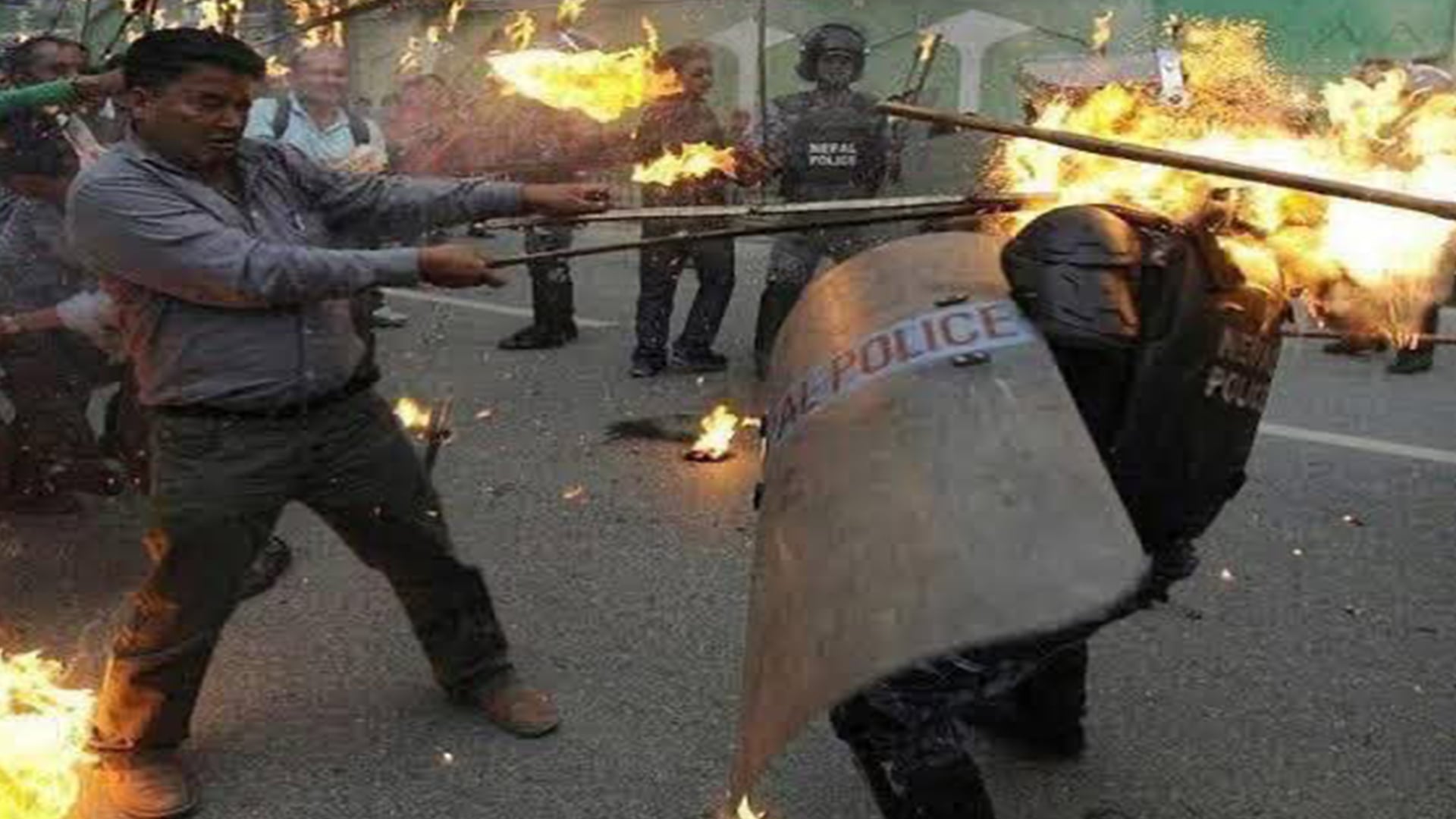Rule of Power? Why Thapa & Basnet Walk Free After Protest Violence That Jailed Others!

KATHMANDU – The streets of Kathmandu, which only days ago buzzed with the routine of daily life, bore witness to a brutal display of state power on Sunday, April 27th. A protest led by the Nepal Teachers’ Federation (NTF), demanding long-overdue action on the School Education Act, was met with a violent crackdown by security forces, shattering the capital's uneasy calm and leaving a trail of injuries and outrage. Reports from Kantipur TV confirm that approximately 60 individuals, primarily teachers but also including journalists covering the event, sustained serious injuries, turning a demonstration for educational rights into a stark reminder of the volatile nature of Nepali politics.
The protest, the latest escalation in a campaign ongoing since April 1st, stems from deep-seated frustration within the teaching community. Teachers accuse successive governments of repeatedly failing to honor agreements reached in 2018, 2021, and 2023, primarily concerning the finalization and passage of the comprehensive School Education Bill. This legislative limbo, they argue, not only undermines their professional security and standards but has also severely disrupted the academic calendar nationwide, delaying student enrollments and critical examination evaluations, impacting countless young lives.
What began as a peaceful march demanding legislative action reportedly devolved into chaos when authorities deployed force, allegedly using water cannons, tear gas, and baton charges to disperse the crowd near Maitighar Mandala, a key protest site. Eyewitness accounts and media reports paint a picture of excessive force wielded against educators exercising their democratic right to assemble. "We came here with demands, not weapons," lamented an injured primary school teacher, requesting anonymity. "We were promised dialogue, but we received blows. How can we teach democracy when we face this?"

The physical injuries, however, were compounded by a deeper symbolic wound inflicted by viral images that spread like wildfire across social media platforms. Photographs purportedly showing prominent political figures – Gagan Thapa, a widely recognized leader of the ruling Nepali Congress, and Mahesh Basnet, an influential figure within the opposition CPN-UML – apparently engaged in violent activities during the clashes, struck a raw nerve. While the precise context and actions depicted in these specific images require further verification, their circulation alone ignited public fury. The sight of leaders from Nepal's largest democratic parties seemingly resorting to street violence, the very tactic often decried when used by opponents, exposed a chilling hypocrisy and underscored a persistent, troubling current within the nation's political DNA: a culture where violence remains an acceptable, almost reflexive, tool.
A Legacy Forged in Conflict
This propensity for political violence is not a recent phenomenon but is deeply rooted in Nepal's tumultuous history. The nation's journey has been punctuated by conflict, shaping its identity and political landscape. The Nepal-China (Tibet) War (1788-1792), driven by disputes over trade and territory, saw military conflict ultimately resolved through Chinese intervention, establishing an early precedent for militarized solutions and influencing Nepal's cautious foreign policy stance.
Less than three decades later, the Anglo-Nepal War (1814-1816) against the formidable British East India Company resulted in significant territorial losses formalized by the Treaty of Sugauli. While shrinking Nepal's borders to their modern configuration, the war also fostered a powerful narrative of Gorkhali bravery and resistance against imperialism, embedding martial values within the national consciousness.
However, the most profound and recent scar was inflicted by the decade-long Maoist Revolution (1996-2006). This brutal insurgency pitted Maoist rebels against state security forces in a conflict that claimed over 17,000 lives, according to official estimates. It was a period marked by widespread violence, including torture, extrajudicial killings, and forced disappearances, perpetrated by both sides. Crucially, established parties like the Nepali Congress and the CPN-UML, while opposing the Maoist insurgency, themselves have histories intertwined with armed struggle and violent resistance during various political movements, including the fight against the Panchayat system and periods of autocratic rule. This historical reliance on force, whether in revolution or counter-revolution, has arguably normalized aggression as a legitimate instrument of political change and control, leaving a legacy that continues to haunt Nepal's democratic transition. The 2008 abolition of the monarchy, a direct outcome of the peace deal ending the insurgency, heralded a new republic, but the deep-seated culture of confrontation persists.
Echoes of Violence in Contemporary Protests
The violent dispersal of the teachers' protest is not an isolated incident but mirrors a disturbing pattern in contemporary Nepal. Even protests advocating seemingly disparate causes often escalate into violent confrontations. Recent pro-monarchy demonstrations, particularly those in March and April 2025, serve as a stark example. Clashes between royalist supporters and police resulted in at least two deaths and over 100 arrests, as reported by outlets like The Times of India and local news sources OnlineKhabar and Khabarhub.
These protests highlighted the aggressive tactics employed by some demonstrators, notably Durga Prasai, a controversial businessman turned political activist. Prasai was widely reported to have used his vehicle to break through police barricades, an act of deliberate and dangerous provocation. Following these violent episodes, both Prasai and Rabindra Mishra, a prominent leader of the Rastriya Prajatantra Party (RPP) and a former distinguished journalist, were subjected to serious charges, including treason.
This raises critical questions about consistency and fairness in the application of the law. While Prasai's actions involved documented, overt aggression, Mishra's direct involvement in violent acts during the protests has not been as clearly established in public reports. His arrest, potentially stemming more from his leadership role in the RPP and association with the protests' aims rather than specific violent conduct, stands in contrast to the current situation surrounding Gagan Thapa and Mahesh Basnet. If the viral photos accurately depict these established leaders engaging in violence, their apparent lack of immediate legal consequence compared to Mishra fuels public perception of selective enforcement.
Rule of Law or Rule of Power?
This disparity brings into sharp focus a central tension plaguing Nepal's political system: Does the nation operate under the impartial rule of law, or is it governed by the arbitrary rule of power, where influence and affiliation dictate accountability? The teachers' protest serves as a potent case study. Their demands are rooted in tangible agreements and legislative necessity, yet their pleas have been met with governmental inertia culminating in violence. The failure to pass the School Education Bill, despite ongoing parliamentary sessions, signals a lack of political will or capacity, further eroding trust.
The government’s narrative, likely centered on maintaining public order, appears hollow when contrasted with the documented use of excessive force against educators and the historical context of broken promises. When high-profile political figures are seen potentially engaging in the very behaviour for which others are swiftly arrested and charged, it reinforces cynicism and the belief that accountability is conditional.
Public sentiment, reflected in numerous posts on platforms like X (formerly Twitter), shows simmering anger and frustration. Kantipur TV reported on X that the Nepal Teachers’ Federation, undeterred by the crackdown, has vowed to intensify their protests, signalling a hardening resolve born of perceived injustice. "They break promises, then they break our bones," one widely shared comment read. "Is this the democracy we fought for?"
Nepal's Democratic Crossroads
Nepal stands as a developing democracy, its institutions still maturing, its public consciousness evolving after centuries of monarchy and decades of political upheaval. The transition to a federal republic was a landmark achievement, but the journey remains fraught with challenges – political instability marked by frequent changes in government (including K.P. Sharma Oli's return as Prime Minister in 2024), persistent corruption, and the unresolved ghosts of past conflicts.
The violence witnessed on April 27th is more than just a crackdown on a single protest; it is symptomatic of this deeper struggle. It highlights the difficulty of shedding a political culture steeped in aggression and confrontation. The images of teachers nursing wounds and leaders potentially inciting violence serve as potent symbols of a democracy wrestling with its own legacy.
While maintaining public order is a legitimate state function, the use of excessive force against citizens demanding basic rights, coupled with perceived impunity for the politically connected, undermines the very foundations of democratic governance. The critical question remains unanswered: Can Nepal’s political culture evolve beyond the cycle of violence and recrimination? Can its leaders, regardless of party affiliation, commit to dialogue, accountability, and the genuine rule of law, ensuring that grievances are addressed through negotiation and justice, not batons and stones? Until then, Nepal’s democratic aspirations risk being continually overshadowed by the long shadow of its violent past.

![From Kathmandu to the World: How Excel Students Are Winning Big [Admission Open]](https://nepalaaja.com/img/70194/medium/excel-college-info-eng-nep-2342.jpg)
